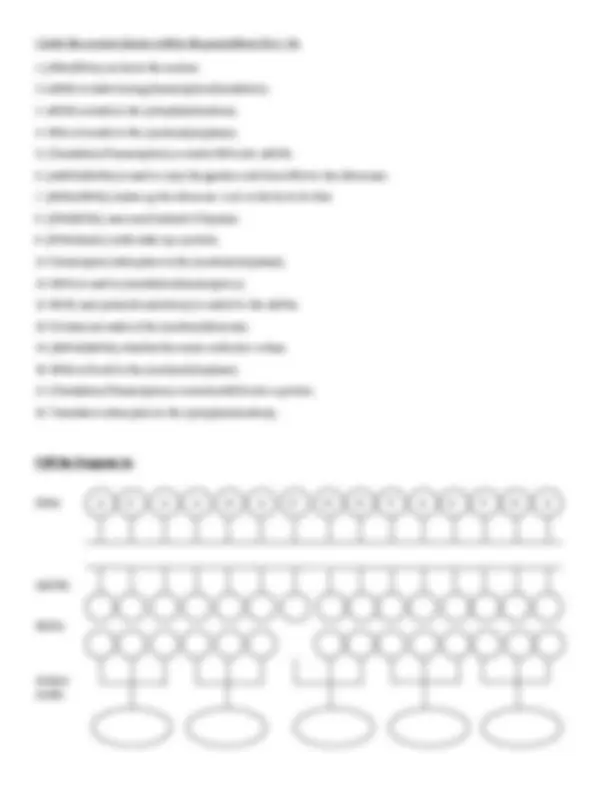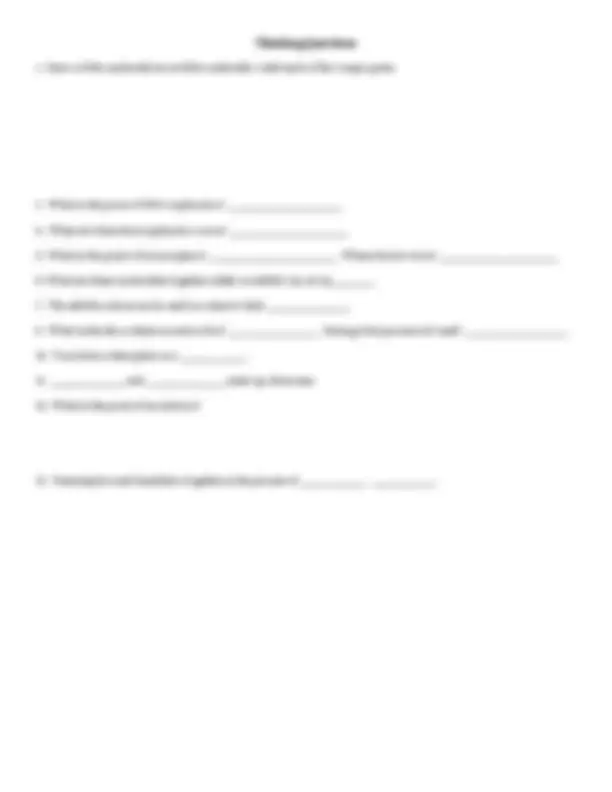




Study with the several resources on Docsity

Earn points by helping other students or get them with a premium plan


Prepare for your exams
Study with the several resources on Docsity

Earn points to download
Earn points by helping other students or get them with a premium plan
Community
Ask the community for help and clear up your study doubts
Discover the best universities in your country according to Docsity users
Free resources
Download our free guides on studying techniques, anxiety management strategies, and thesis advice from Docsity tutors
Proteins synthesis in explain the process of proteins which are make in body and also describes about transcription process.
Typology: Summaries
1 / 4

This page cannot be seen from the preview
Don't miss anything!



PART A. Read the following: Protein synthesis is the process used by the body to make proteins. The first step of protein synthesis is called Transcription. It occurs in the nucleus. During transcription, mRNA transcribes (copies) DNA. DNA is “unzipped” and the mRNA strand copies a strand of DNA. Once it does this, mRNA leaves the nucleus and goes into the cytoplasm. mRNA will then attach itself to a ribosome. The strand of mRNA is then read in order to make protein. They are read 3 bases at a time. These bases are called codons. tRNA is the fetching puppy. It brings the amino acids to the ribosome to help make the protein. The 3 bases on tRNA are called anti-codons. Remember, amino acids are the building blocks for protein. On the mRNA strand, there are start and stop codons. Your body knows where to start and stop making certain proteins. Just like when we read a sentence, we know when to start reading by the capitalized word and when to stop by the period. Ribosome mRNA DNA tRNA mRNA PART B. Answer the following questions on your paper:
PART C. Use your codon chart to determine the amino acid sequence. Remember to read through the strand and ONLY start on AUG and STOP when it tells you to stop. Follow example below:
Thinking Questions